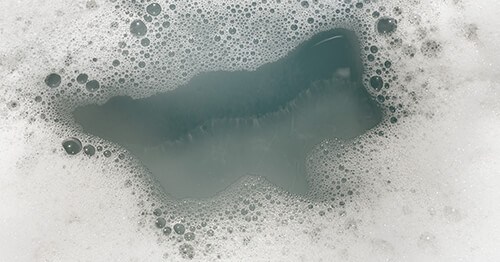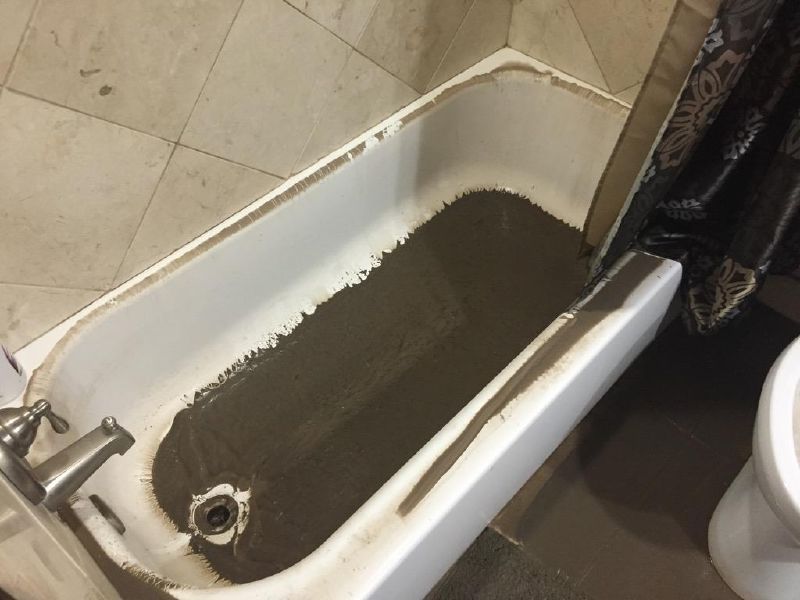Significant Factors Behind Discharge in the Bathtub
Significant Factors Behind Discharge in the Bathtub
Blog Article
The article author is making a number of good annotation related to Why is Sewage Backing Up Into My Bathtub? overall in this great article down the page.

Sewage back-up in the tub can be a distressing and unhygienic trouble for any type of homeowner. Not just is it troublesome, but it also presents significant wellness threats and shows underlying problems with the plumbing system. Understanding why sewage is showing up with the tub is critical for taking ideal action to resolve the issue efficiently.
Intro to the Concern
Usual Reasons for Sewer Back-up
Clogs in the Sewage System Line
One of the most usual reasons for sewer back-up is a clog in the drain line. This can take place due to the accumulation of debris, grease, or foreign items in the pipes, protecting against appropriate circulation and creating sewage to back up into your bath tub.
Tree Root Breach
Tree roots looking for dampness and nutrients can penetrate sewage system lines with tiny fractures or joints. Over time, these roots can grow and expand, causing significant damage to the pipes and bring about sewage back-up issues.
Recognizing the Issue
When sewer draws back up right into the bathtub, it's a clear sign of an issue with the drain system. The wastewater that must be flowing far from your home is rather locating its back right into your home, which can cause substantial damage and carcinogen.
Prospective Reasons
A number of elements can contribute to sewage back-up in the tub. From obstructions in the sewage system line to concerns with the plumbing facilities, identifying the source is important for finding a remedy.
Aging Framework
Older homes might have outdated plumbing systems that are more vulnerable to deterioration, splits, and wear and tear. As pipelines age, they end up being a lot more vulnerable to leaks and obstructions, enhancing the probability of sewage back-up events.
Heavy Rainfall or Flooding
During periods of heavy rainfall or flooding, the drain system may come to be overloaded with excess water, causing back-ups and overflows. This can cause sewage supporting into bath tubs and various other fixtures inside the home.
Indicators of Sewage Back-up
Foul Odors
Unpleasant smells originating from drains or fixtures, specifically in the shower room, might show sewer backup concerns. These smells are usually strong and relentless, signaling an issue that needs prompt attention.
Slow Draining Fixtures
Tubs, sinks, and toilets that drain gradually or not whatsoever could be experiencing sewer back-up. If several components are impacted concurrently, it's likely that the issue originates from a typical factor, such as the major drain line.
Gurgling Noises
Odd gurgling or bubbling noises originating from drains pipes when water is running somewhere else in your house are a sign of air trapped in the plumbing system. This air accumulation can result from sewage back-up and should be explored promptly.
Wellness Threats Related To Sewer Backup
Contamination of Supply Of Water
Sewage backup can contaminate the water system in your home, positioning a significant health and wellness threat to you and your family members. Exposure to contaminated water can lead to intestinal concerns, skin infections, and other illnesses.
Mold and mildew Development
Moisture from sewage backup can develop perfect problems for mold growth in your home. Mold spores can worsen respiratory system problems and trigger allergies in delicate individuals, making prompt cleaning necessary.
Spread of Condition
Sewer contains harmful germs, infections, and parasites that can create a series of diseases, consisting of liver disease, cholera, and gastroenteritis. Coming into contact with sewage or polluted surfaces puts you in jeopardy of infection.
Tidying up After Sewer Back-up
Sanitation Procedures
Thoroughly sanitize and disinfect impacted areas after sewage back-up to remove unsafe microorganisms and avoid mold and mildew development. Usage suitable cleansing products and protective equipment to make sure safe and efficient cleaning.
Reconstruction of Impacted Areas
Repair any type of damage to flooring, wall surfaces, or components triggered by sewage back-up. Depending upon the extent of the damages, you may need to replace carpets, drywall, or other materials to recover your home to its pre-loss condition.
Immediate Actions to Take
Turning Off Supply Of Water
In the event of sewage backup, it's essential to shut off the supply of water to prevent further contamination and damage. Find the major water shutoff valve in your house and shut it off till the concern can be settled.
Contacting an Expert Plumber
Dealing with sewer back-up is not a do it yourself task. Contact a qualified plumber with experience in dealing with sewage-related issues to evaluate the situation and perform essential repair services or cleanings.
Staying Clear Of Contact with Contaminated Water
Till the sewage backup is dealt with, prevent contact with polluted water to avoid the spread of bacteria and virus. Put on safety gear if you must be in the damaged area and clean your hands completely later.
Safety nets
Normal Maintenance of Sewer Lines
Set up routine assessments and upkeep of your drain lines to identify and deal with possible concerns before they intensify into major issues. This can include clearing out debris, inspecting for tree origin breach, and repairing any damaged pipes.
Mounting Backwater Valves
Take into consideration setting up backwater valves in your plumbing system to prevent sewage from receding into your home throughout periods of heavy rainfall or flooding. These valves automatically close when water starts backing up, shielding your residential property from contamination.
Appropriate Disposal of Household Waste
Stay clear of purging anything aside from toilet paper and human waste down the commode to stop obstructions and clogs in the drain line. Dispose of grease, oil, and various other home chemicals correctly to decrease the danger of plumbing issues.
Why Is Water Backing Up in My Bathtub When I Flush My Toilet?
What to do about a sewer line clog
First, don’t bother with plunging. No amount of plunging will dislodge the clog in a sewer line. The clog is too far away. Plungers are for clogs in the toilet itself, not the sewer line. Plus, the most likely causes of a sewer clog are:
Tree roots Flushed toys or feminine products Grease buildup Those items don’t move easily. And in the case of tree roots, the roots need to be cut out of the pipe and the pipe will need to be repaired.
You’ll need a closet auger. A closet auger is a type of plumber’s snake with a protective cover to keep from scratching the delicate porcelain toilet. If the clog is further down, you may need to remove the toilet or use one of your cleanouts to get to the clog.
We also recommend doing a video inspection of the drain to ensure that the cause of the clog has been completely removed. Otherwise, you could have the same problem again in a few days or weeks.
https://mspplumbingheatingair.com/blog/why-is-water-backing-up-in-my-bathtub-when-i-flush-my-toilet

As a devoted reader about Why sewage is coming up through your bathtub, I think sharing that excerpt was important. Kindly take the opportunity to distribute this page if you enjoyed reading it. We thank you for reading our article about What To Do If Sewage Starts Backing Up Into the Shower.
About
Report this page